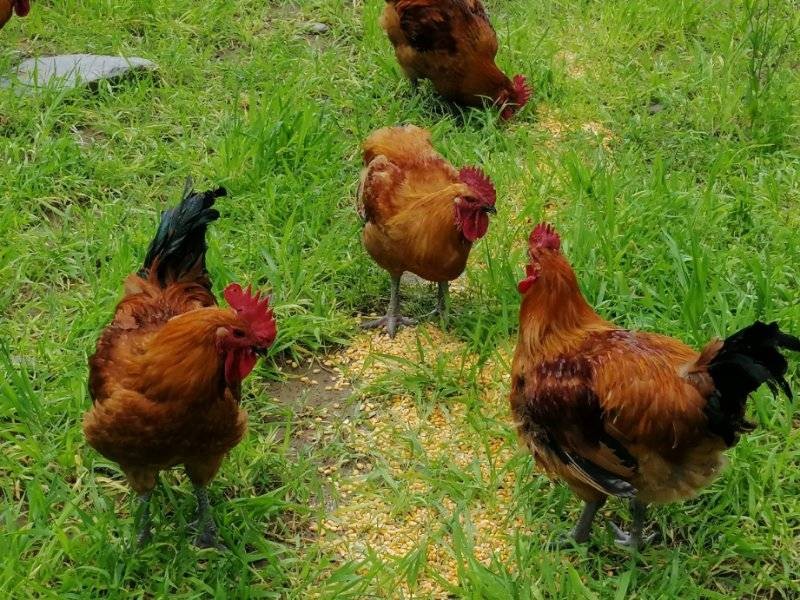
News briefing: Marek’s disease

News briefing: Marek’s disease
Marek’s disease (MD) is a lymphoproliferative disease of chickens caused by Marek’s Disease Virus (Marek’s Disease Virus) . The peripheral nerves, gonads, Iris, various internal organs, muscles and skin of diseased chickens were infiltrated by monocytes to form lymphoid tumors. Oie classified it as a class B epidemic. According to antigenicity, Marek’s disease virus can be divided into three serotypes: Serotype L, serotype 2 and serotype 3. Serotype 1 includes all tumorigenic Marek’s viruses, including virulent and attenuated variants; serotype 2 includes all non tumorigenic Marek’s viruses; serotype 3 includes all Turkey herpesviruses and their variants.
1. Popular features
The source of infection is diseased and infected chickens (most of which are infected with Marek’s disease for life) . The main source of infection is the shedding of feather follicle epithelium, Dander and dust in the henhouse. In addition, the secretion and Excreta of sick and poisonous chickens are also infectious. The virus is transmitted mainly through the respiratory tract. The disease mainly infected chickens, different strains of chicken can be infected. Turkeys, pheasants, quail, partridges can be naturally infected, but the incidence of disease is rare. The disease is highly contagious and the infection rate can reach nearly 100% once the virus invades susceptible chickens. The incidence of this disease is related to chicken age, the younger the age, the higher the susceptibility, therefore, 1-day-old chicks Z susceptibility. The disease usually occurs in chickens aged 5 ~ 8 weeks, and the peak of the disease is usually between 12 ~ 20 weeks. The local chicken breeds in China are susceptible to infection.
2. Clinical symptoms
The incubation period of natural infection ranges from 3 to 4 weeks to several months. Generally divided into nerve type (classical type) , acute type (visceral type) , eye type and skin type four, sometimes can be mixed. (1) nervous type: The main performance for Gait instability, Ataxia. Characterized by paralysis or paralysis of one or more limbs, forming a leg to the front and a leg to the rear (commonly known as Split) , wing paralysis droop (commonly known as wearing a coat) . The head and neck are askew and the crop is enlarged by paralysis.
(2) SPLANCHNIC type: It often attacks young chickens and has a high mortality rate. Common in the GONADS (especially ovaries) , followed by the kidney, spleen, heart, liver, lung, pancreas, Mesentery, glandular stomach, intestine, muscle and other organs.
(3) eye type: The main invasion of the Iris, unilateral or binocular morbidity, vision loss, or even blindness. Here, the Iris is hyperplastic and discolored, showing a cloudy light gray (commonly known as gray or silver eyes) . The pupil is constricted, with jagged edges.
(4) cutaneous: characterized by the formation of nodules or tumors in the hair follicles of the skin.
3. Anatomical changes
(1) nerve type: On examination, the injured nerve is seen to be swollen and thickened. It often occurs in the SCIATIC nerve, the cervical vagus nerve, the brachial plexus, the CELIAC plexus and the Mesenteric plexus, grayish white or yellowish white.
(2) visceral type: On dissection, there are gray-and-white lymphocyte tumors in the internal organs.
(3) skin type: seen in the neck and wings of the skin, and later throughout the body skin tumors.
4. Prevention and treatment
According to the cause of infection, the hatchery or hatchery should be kept away from the Henhouse, and the hatchery should be disinfected regularly and strictly to prevent early infection. Early infection during the brooding period is also an important cause of the outbreak. The brooding room should be kept away from the Henhouse, and the chickens should be thoroughly cleaned and disinfected before being released. Broiler flocks should be all-in-all-out system, each batch of chickens sold vacant space 7 to 10 days, for thorough cleaning and disinfection, and then raise the next batch of chickens. Marek’s vaccine plays a key role in controlling the disease, and should be inoculated with Marek’s vaccine according to the immunization procedure to prevent the occurrence of the disease. In case of this disease, strict control and extermination measures shall be taken in accordance with the Animal Epidemic Prevention Law of the People’s Republic of China to prevent the spread of the disease. Sick chickens and the same group of chickens should be all culled and harmless treatment. Contaminated sites, chicken houses, utensils, feces and other strict disinfection.
Date of opening:1970-01-01 Shop address: Main products: Store certification time:1970-01-01 08:00:00
Store Name: Principal: Contact number: email: